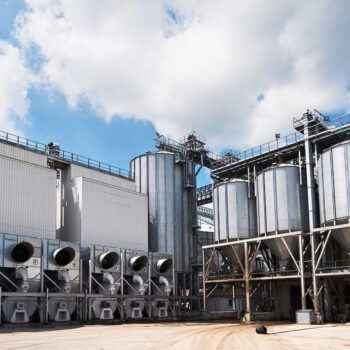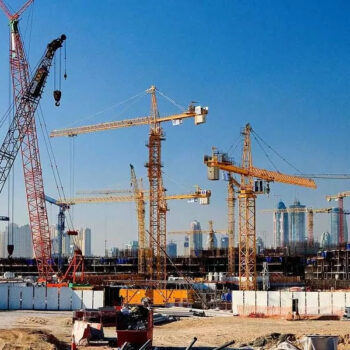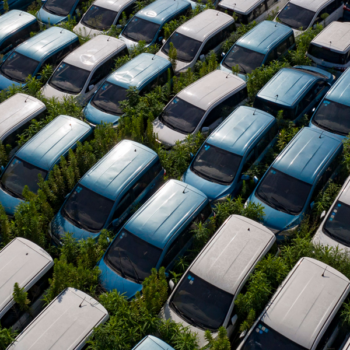The article talks about the impact of government measures, including the gradual rollback of FAME II subsidies and withholding subsidies due to non-compliance with regulatory requirements, on the electric two-wheeler (e2W) industry in India. It discusses the pricing strategies adopted by different OEMs, longer transition times to EV adoption, and operational inconvenience faced by some players. Despite the setback, the article suggests that the adoption of e2Ws will continue to be advantageous in the long run, and the market can absorb the changes across various OEMs. The article also emphasizes the need for gradual subsidy tapering and effective communication in future investigations.

Recently, a combination of government measures and industry events have found some OEM players in a fix. The first blow came in the form of the government decision to implement a gradual roll back of FAME II subsidies. Then, followed a decision to withhold subsidies to the tune of INR 1,500 crores due to some players finding themselves on the wrong side of regulatory requirements.
The background
The FAME scheme was born in 2015 as an initiative of the Modi government to address the challenges faced by the EV industry, such as high upfront costs and limited charging infrastructure. The idea was to provide financial incentives and support to enable faster adoption of EVs. After a successful phase I program, FAME II was launched in 2019 for a period of 5 years with an outlay of INR 10,000 crores. This time, the focus was on public and commercial transport with an extension of such benefit allowed to privately owned electric 2-wheelers (e2W). However, from June 1st of this year, the government implemented a rollback resulting in the erstwhile rebate of INR 15,000 per KWH of battery upto a maximum of 40% of costs of the e2W reducing to INR 10,000 per KWH upto a maximum of 15% of the costs of the e2W.
Meanwhile, a parallel set of events was also playing out. A string of anonymous emails were circulating, alleging misappropriation of the subsidies by some e2W entities. Following this, when a government investigation was conducted, it was found that OEMs were not adhering to one of the key requirements under the FAME II scheme – that of fitting the EVs with at least 50% locally made parts. The reasons proffered for such non-compliance varied across the OEM landscape. Some stated that the supply chain disruption simply did not allow them to make the local purchases as required, while others claimed that there were challenges to identify any serious local part manufacturers because of the low adoption. Be that as it may, such non-compliance meant the government was far from pleased.
Additionally, an ‘innovative” pricing move by some players also added to the ire. This flouted another criteria of the under FAME II, that requires e2Ws to be priced below INR 1,50,000 to qualify for the subsidies. While some toed the regulatory line, others tried to work around this stipulation by segregating the items to be sold i.e. they priced the 2 wheeler under INR 1.5 lakh, but charged an extra amount for batteries and software. Thereby, they were able to position themselves as genuine subsidy claimants whereas the reality was anything but.
The resultant outcome of these actions was that the government withheld the abovementioned subsidies till certain corrective measures were undertaken by the erring parties. This step, coupled with the gradual rollback of the FAME II subsidies has found the e2W industry going back to the drawing-board for a reassessment of strategies.
Impact of the twin measures:
- Price increase of e2Ws: OEMs are employing varied pricing approaches. Some, like OLA Electric have adopted a flat price increase of INR 15,000 and are absorbing the excess subsidy loss. Others, like Ather have used a differential pricing approach with the price increases varying for different models. Bajaj Auto, on the other hand, has taken a measure to pass on the entire subsidy loss of about INR 22,000 to the customer directly.
- Longer transition to EV adoption: While the major players like OLA and Ather are backed by investments and are flush with capital, smaller players in this space may find the rollback unfair preferring the subsidies to have gone on for longer. As these players plan their pipeline for effective sourcing and work on their pricing strategy there could be longer lead times in production. Thereby, the initial fillip provided by the original subsidy scheme may not necessarily come to a halt, but will surely decelerate for the time being.
- Operational inconvenience: Players who unbundled the structure of the e2W and sold the software and batteries separately to customers are now required to compensate customers. The typical payout is estimated to be around INR 120-140 crores for those guilty. This unplanned cost on their books will also translate to an operational challenge as the quest to identify past buyers to effect refund will begin. This may not fundamentally change the gameplans of the OEM players, but will certainly lend some interim inconvenience.
The future:
These measures have effected a pendulum swing in favour of ICE 2-wheelers. Furthermore, with an election year upon us, there is a possibility that the government might exert pressure on OMCs to reduce petrol prices thereby offering an additional blow for e2Ws as the ICE vehicles could appeal more to customers. The record e2W sales of ~105,000 units in May this year will diminish for the time being. But, it is unlikely that the overall adoption of e2W will be adversely effected. The TCO of e2W still makes it a more advantageous option over ICE 2-wheelers in the long run. Also, since the impact has been on the industry as a whole and not a particular brand, it is easier for the market to absorb changes since it cuts across OEMs.
To conclude:
It was only a matter of time before these subsidies were gradually phased out – that is the very nature of the beast. Subsidies are meant to offer a boost to overcome challenges but once such hurdles are addressed, a rollback is necessary to ensure development of manufacturing and engineering prowess. The gradual tapering down of the subsidies by the government (as opposed to complete a slashing down) cushions any adverse impact as the challenges that manifest can be effectively gauged before any recalibration follows. As to the withholding of subsidies, it signals a fair action for erring parties who try to transgress the boundaries laid out by stipulated regulations. But quicker decision making in future investigations and clear communication will certainly help alleviate the uncertainty that the companies were dealing with this time around.

Aloy Mahapatra
Aloy Mahapatra - Aloy Mahapatra has nearly a decade of experience in professional services. Throughout his career, he has worked closely with a diverse set of clients in the domains of industrials, financial services, logistics, FMCG, legal and more. At the firm, he focuses on projects related to strategy and execution where he advises clients on go to market, diversification, investment identification, digital transformation, and performance improvement. Prior to a career in consulting, he has spent close to 5 years as a practicing lawyer dealing with governance, shipping, and international trade disputes across global jurisdictions. Aloy brings a unique combination of strategic insights, risk assessment and legal expertise to his projects, thereby offering clients comprehensive solutions to their business problems.







